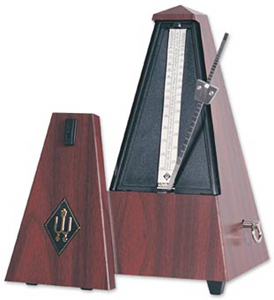
Our latest Audio PROfile comes from Team ICG® Master Trainer Jim Karanas!
PROFILE DESCRIPTION
Timing is one of the most basic essentials of training. I like to think of Timing as “how you interact with what you perceive.” The road is the road. At times, it will come at you in ways that are unpredictable. How you ride your bike depends largely on your sense of timing or how you make the subtle adjustments necessary to maximize your sense of ease. Exhilaration results when you experience effortless power. Effortless power is a result of good timing.
When a novice rides the bike, they are unsure of what gear to use and will at times fight the bike and the road. As their timing develops, their gear selection and shifting improve to where they no longer have to think about it and they begin to sense “flow”. Flow is a feeling of simplicity when you sense no difficulty. The bike rolls over the terrain seamlessly, like a dream.
Developing a sense of timing begins through cadence exercises. Cadence is how fast you pedal. Your RPM. Cadence training makes you more efficient, improves your technique, uses a wider array of muscles and enhances your presence when training. It is a mechanical practice that requires patience and discipline but will eventually help lift you to a level of artistry.
Download the complete profile and playlist.
Timing & Cadence Playlist in Spotify and Deezer - please note the substitutions and slight variations in track lengths. You'll need to adjust section times accordingly.
Podcast: Play in new window | Download
Originally posted 2012-05-26 08:46:12.

thanks jim,
how much time are you giving for recovery and is this inclusive within the 10:00 work efforts or separate?
It’s inclusive Renee. The recovery is limited. Never complete. I take the students to the beginning of the resistance ladder for each 10. The first 2 minutes of each 10 suffices for recovery as they adapt their legs to the new pedaling speed. Allow them to drop their heart rate at that time.
Hello,
Thanks for the profile. I taught this class tonight and it was quite difficult. I felt as though the the high cadence of 120 was the most difficult for the 10 minute block. I normally teach a high cadence as being around 90-100 RPM as it seemed to contradict what I have been telling my class. Any suggestions or relevant examples as when you would ride at this cadence for this length of time so that I can apply this to our class? I did stress the importance of finding the resistance that would allow someone to ride at this high pace and still be smooth on the bike. I ride outdoors as well and I would rarely ride at this cadence unless it was a hard short sprint finish. With all that being said, I enjoyed the simplicity of the profile and the challenge that it presented. I am going to teach the class next week to a different class at a different gym.
Pat
Pat:
Thanks for using the profile. 120 RPM is not a cadence that you would normally pedal on a real bicycle on the road. However, it is used a great deal for cadence drills to help improve a cyclist’s ability to spin effectively. In theory, if a cyclist can improve their efficiency at the higher cadences ranges, they will start to adopt slightly faster cadences in general and this will improve their performance over a long day of cycling.
The watts I need to produce to turn the pedals in a hard gear impacts me. If I can mitigate that impact without losing any bike speed, then I will be able to ride faster for longer. The only way to do that is to quicken my cadence. A higher RPM at the same bicycle speed means fewer watts necessary per revolution of the pedals. If I am efficient at 95 watts for the day then I can “spin” easier gears then someone that has to ride at 80 RPM to move the bike at the same speed. The gears necessary for the 80 RPM person will, theoretically, tire them out before I get tired at 95. However, I have to become efficient at 95. That is why cyclists do cadence drills.
Very simply, most novices will turn hard gears because they are inclined to use their big muscles. As a cyclist evolves, they learn how to spin easier gears by strengthening smaller muscles. The first time someone has to turn 120 for 10 minutes, they will likely have problems (especially if they are using a belt-driven bike which I recommend). That is part of the drill. If they can’t handle 120 for 10 minutes, tell them to select the highest RPM they can maintain. Keep in mind, that this RPM should not be comfortable. You are trying to train muscles that have not been trained. The CV impact many not be that great but their legs will feel like they are going to fall off.
I hope this explanation helps. LMK. Thanks.
Jim
Hello,
Thanks. I guess in a nutshell that is what I told them and how I taught the high cadence. I did preface the class that it was a higher cadence than we normally do but try to move out of their comfort zone and spin at a higher cadence while remaining smooth. It is also interesting to tie in heart rates at the various cadences. We do not have the ability on our bikes to see wattage and how far we travel for a particular block of work. I did enjoy the workout and will see how my Thursday class does with the profile.
Pat